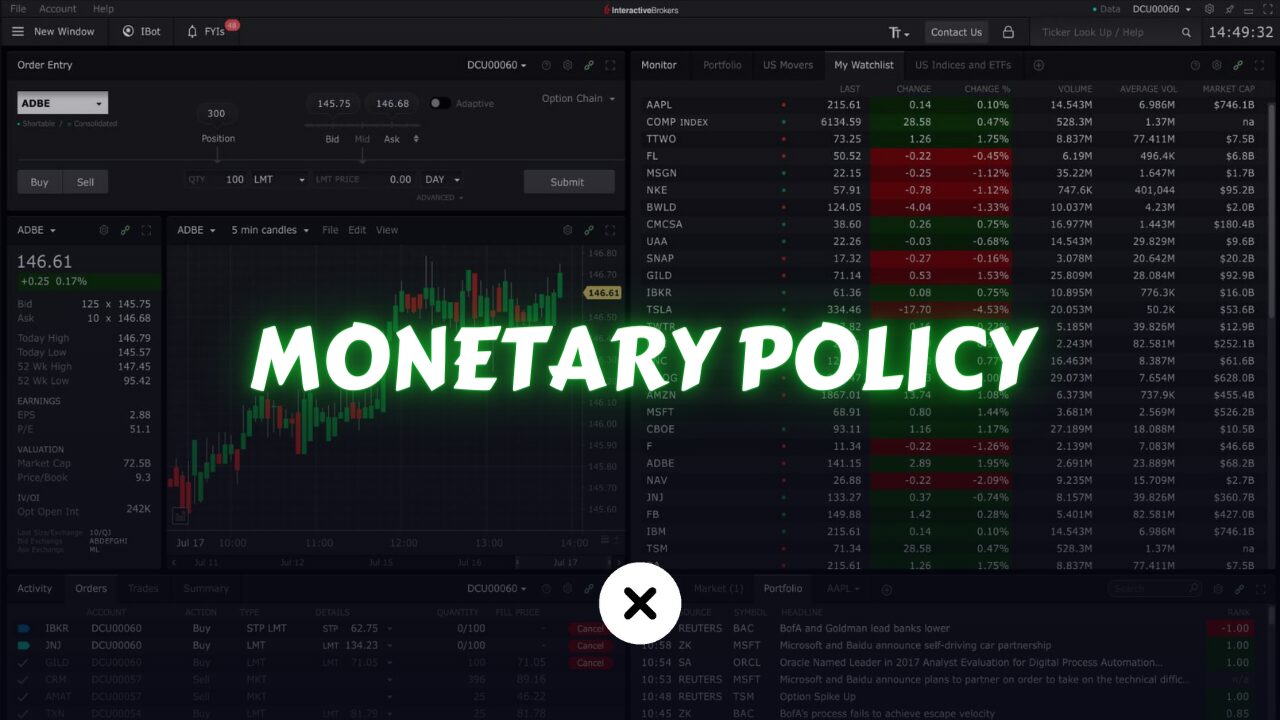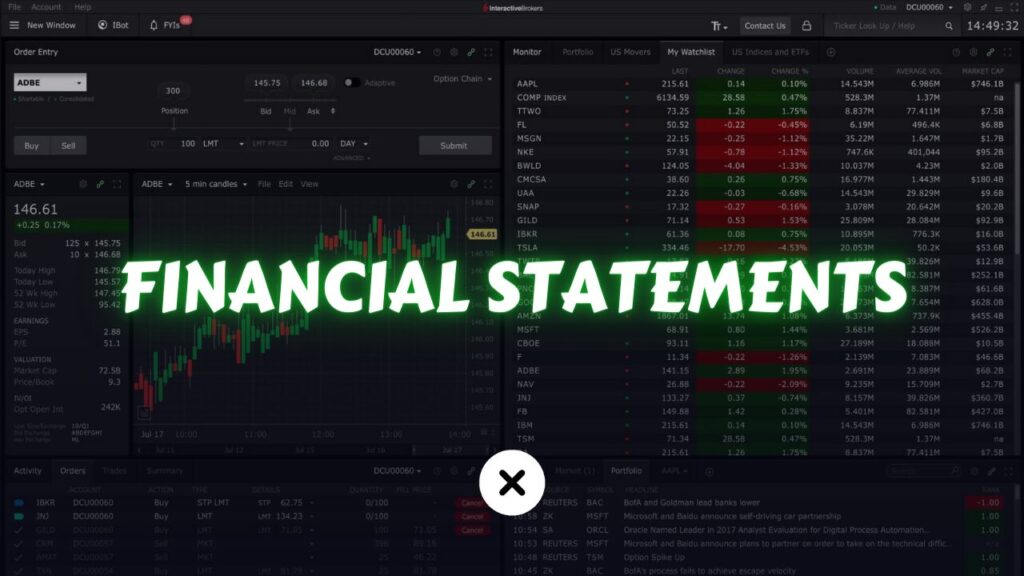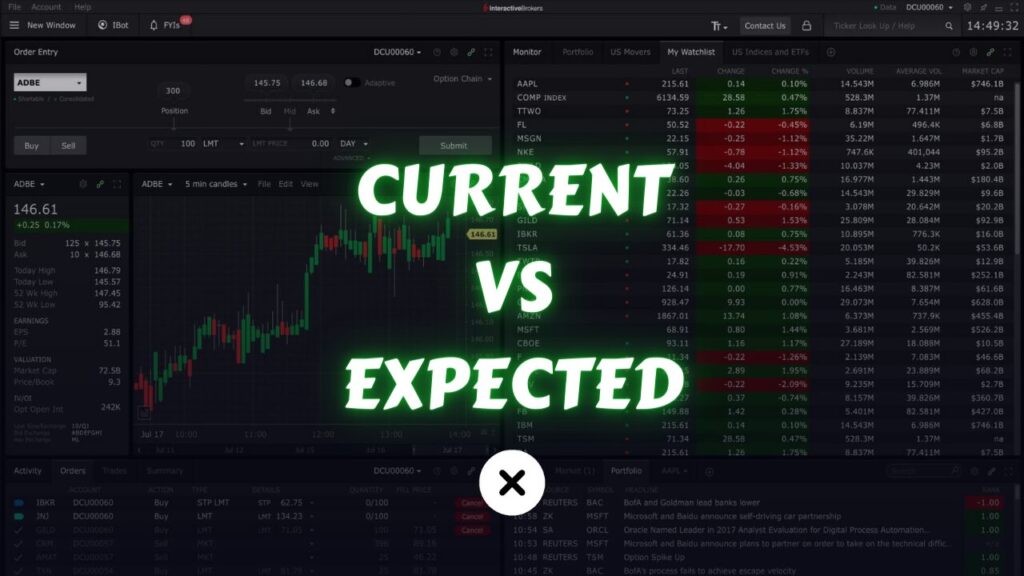
In the previous article, we talked about why it’s important for an economy to grow in cycles to stay stable. This is because we want to avoid sudden big expansions that could cause crashes later on. When the economy grows too quickly, a crash in the future becomes likely.
In many countries, like the United States, there’s a specific inflation rate aimed for to support economic growth. For example, the U.S. aims for a 2% inflation rate each year. The government works hard to keep this 2% inflation rate steady because it’s seen as a good level of inflation for the economy.
Keeping that in mind, the government has two main ways to influence whether the economy speeds up or slows down: monetary policy and fiscal policy.
Monetary policy is super important in shaping a country’s economy. It’s a smart tool used by central banks to manage how much money is out there and the interest rates. The big goal is to keep prices stable, make sure there are plenty of jobs, and help the economy grow in a healthy way.
In this article, we’re going to dive into the details of monetary policy, checking out how it works, what tools it uses, and what it means for everyone.
What is Monetary Policy?
Monetary policy refers to the actions undertaken by a central bank, such as the Federal Reserve in the United States or the European Central Bank in the eurozone, to regulate the availability and cost of money and credit in the economy.
It involves the use of various tools and techniques to influence key economic variables, including inflation, employment levels, and overall economic activity.
Monetary policy involves managing the money supply and determining interest rates.
When there’s more money in circulation, the economy usually speeds up because people spend more. On the flip side, if there’s less money available, the economy slows down. Likewise, when interest rates are low, it’s easier for folks to borrow and invest, which gives the economy a boost. But when interest rates are high, it tends to put the brakes on economic activity.
What are Central Banks?
Governments implement their monetary policy through their central banks. A central bank is an institution responsible for overseeing a country’s currency, money supply, and interest rates.
Its primary role is to regulate the monetary system with the aim of mitigating economic crises and ensuring stability within the economy.
The Federal Reserve of United States
Typically, every country has its own central bank, functioning as an integral part of the nation’s financial system. However, in the United States, we have the Federal Reserve, commonly known as the FED. The Federal Reserve was established in 1910 and officially enacted into law with “The Federal Reserve Act” in 1913. It plays a crucial role in overseeing the country’s monetary policies and financial stability.
Their website offer information about their activities and the direction they are taking.
The Federal Reserve (FED) is composed of various entities that collectively oversee and manage the central banking system in the United States. These entities include:
Board of Governors of Federal Reserve System
The Board of Governors is the primary governing body of the Federal Reserve System. It consists of seven members who are appointed by the President of the United States and confirmed by the Senate.
Each member serves a 14-year term to ensure their independence from political pressures. The Chair of the Board is also appointed by the President and serves a four-year term.
The Board of Governors is responsible for setting monetary policy, including decisions related to interest rates and the money supply.
What are Federal Reserve Banks?
There are twelve regional Federal Reserve Banks spread across the United States. Each Federal Reserve Bank operates within its designated district and serves as a decentralized arm of the central banking system.
These banks play a crucial role in implementing monetary policy, supervising and regulating financial institutions, and providing various banking services to depository institutions within their districts.
What is Federal Open Market Committee(FOMC)?
The FOMC is a key component of the Federal Reserve System and is responsible for formulating the country’s monetary policy.
It consists of the seven members of the Board of Governors and five Reserve Bank Presidents. The Chair of the Board of Governors serves as the Chair of the FOMC. The FOMC meets regularly to discuss economic conditions and make decisions about interest rates and other monetary policy measures.
Their responsibility includes engaging in transactions involving government securities. When they sell these securities, it results in a decrease in the money supply within the market. This happens because when people purchase these securities, it leads to a reduction in the amount of money circulating in the economy. On the other hand, when they buy back these securities from the public, they inject money into the market, thereby increasing the money supply.
Who are Member Banks?
National banks and state-chartered banks that meet certain criteria are required to become members of the Federal Reserve System.
Member banks hold stock in their regional Federal Reserve Bank and elect six of the nine members of each Reserve Bank’s board of directors.
Mechanisms of Monetary Policy
Central banks employ various mechanisms to implement monetary policy. These mechanisms can broadly be categorized into two approaches, conventional monetary policy and unconventional monetary policy.
Conventional Monetary Policy:
This involves the manipulation of short-term interest rates, primarily through the central bank’s control over the target for the federal funds rate (or equivalent rates in other countries). By adjusting interest rates, central banks influence borrowing costs for businesses and consumers, thereby affecting spending and investment decisions.
Unconventional Monetary Policy:
In times of economic crisis or when conventional tools prove ineffective, central banks may resort to unconventional measures.
These may include quantitative easing (QE), where central banks purchase financial assets such as government bonds to inject liquidity into the financial system and lower long-term interest rates. Forward guidance, which involves communicating the future path of interest rates, is another unconventional tool aimed at influencing market expectations and behavior.
Instruments of Monetary Policy
Central banks utilize a range of instruments to implement monetary policy effectively. Some of the key instruments include,
Open Market Operations (OMOs):
Central banks buy or sell government securities in the open market to influence the money supply and interest rates. Purchases inject liquidity into the financial system, while sales withdraw liquidity.
Discount Rate:
The discount rate, also known as the central bank’s lending rate, is the interest rate at which commercial banks can borrow funds directly from the central bank. By adjusting the discount rate, central banks can influence the cost of borrowing for banks and, consequently, lending rates in the broader economy.
Reserve Requirements:
Central banks mandate that commercial banks hold a certain percentage of their deposits as reserves. By adjusting reserve requirements, central banks can influence the amount of money that banks can lend out, thereby affecting the money supply.
Implications of Monetary Policy
Interest Rates:
Changes in monetary policy directly impact interest rates, influencing borrowing costs for businesses, consumers, and governments. Lower interest rates stimulate borrowing and spending, while higher rates can dampen economic activity.
Inflation:
Central banks aim to achieve their inflation targets through monetary policy. Expansionary policies, such as lowering interest rates or engaging in QE, can lead to higher inflation, while contractionary policies may help curb inflationary pressures.
Exchange Rates:
Monetary policy decisions can also influence exchange rates by affecting interest rate differentials between countries. A tightening monetary policy, for instance, can attract foreign capital inflows, strengthening the domestic currency.
Asset Prices:
Monetary policy actions, particularly unconventional measures like QE, can impact asset prices such as stocks, bonds, and real estate. Lower interest rates tend to boost asset prices by reducing the cost of borrowing and increasing investors’ appetite for riskier assets.
Financial Stability:
While monetary policy aims to support economic objectives, it can also affect financial stability. Excessive easing measures may inflate asset bubbles or encourage excessive risk-taking in financial markets, posing risks to financial stability in the long run.
Conclusion
Monetary policy is super important for central banks to hit their big economic goals. They do this by playing around with interest rates, controlling how much money is out there, and using different policy tools. The aim? Keep prices stable, make sure everyone who wants a job can get one, and help the economy grow in a healthy way.
But there’s a lot that can affect how well these policies work, like what’s going on in the economy overall, how the financial markets are behaving, and how well the policies are actually working. That’s why central banks are always checking things out and making tweaks to their plans to keep up with the constantly changing global economy.



